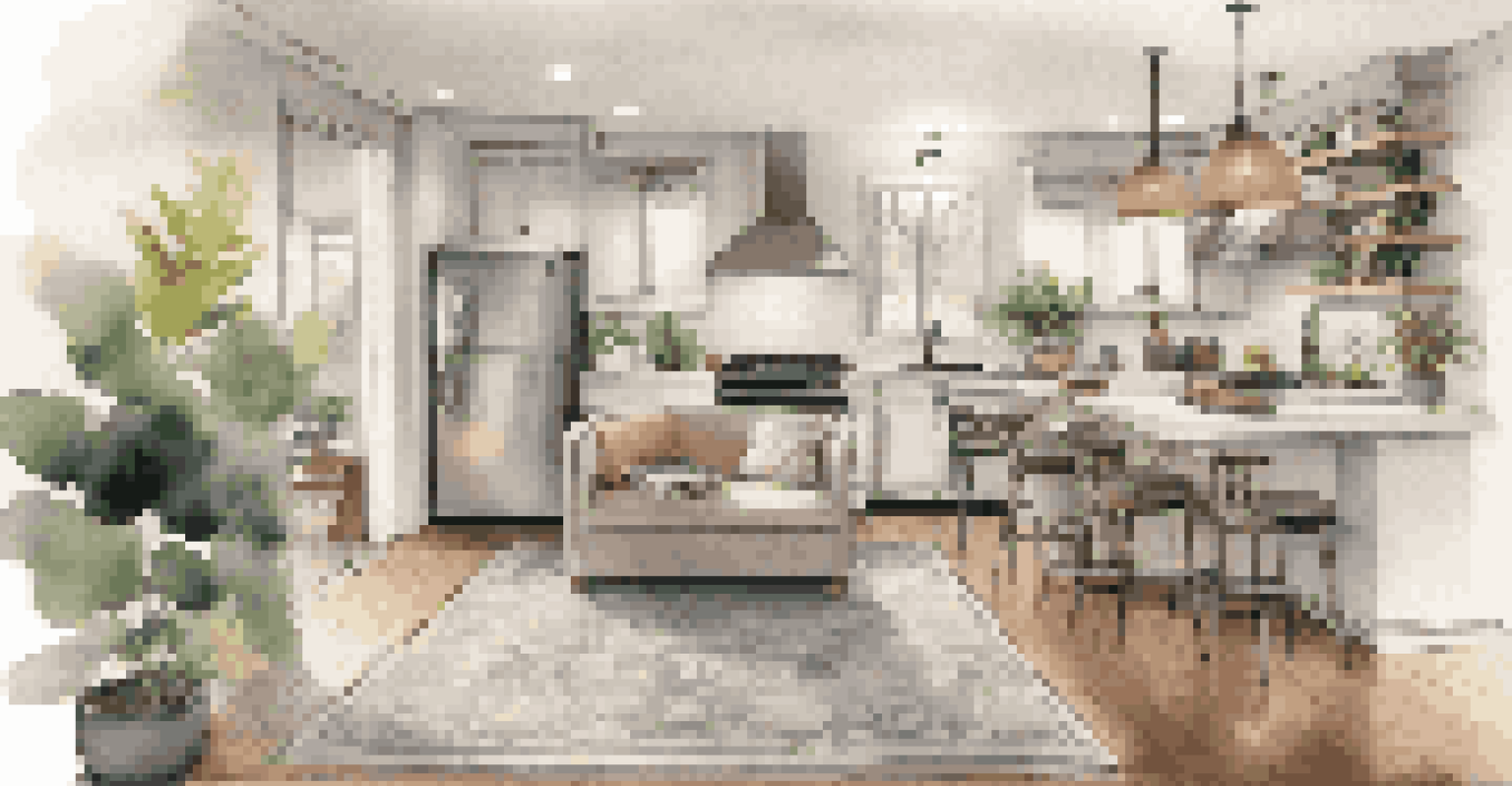Open Concept Living: Nurturing Connections at Home

Understanding Open Concept Living and Its Appeal
Open concept living refers to a design style that eliminates barriers between common areas, creating a fluid space. This layout typically combines the kitchen, dining, and living areas into one cohesive zone, making it perfect for families and social gatherings.
The best rooms have something to say about the people who live in them.
The appeal of open concept living lies in its ability to foster connection. Without walls to separate spaces, it encourages interaction among family members and guests, making it easier to engage in conversations, share meals, or enjoy entertainment together.
Moreover, this layout enhances natural light flow throughout the home, creating a warm and inviting atmosphere. The interconnectedness not only looks stylish but also promotes a sense of togetherness that many homeowners cherish.
Benefits of Open Concept Layouts for Family Life
One of the biggest benefits of open concept living is the way it nurtures relationships. Parents can easily keep an eye on children while cooking or working, fostering a sense of security and togetherness in the household.

Additionally, this layout creates a casual environment that encourages family bonding. Whether it's a game night or cooking together, the lack of physical barriers allows for spontaneous interactions that strengthen family ties.
Open Concept Fosters Connection
The open layout encourages interaction among family members and guests, creating a warm, inviting atmosphere.
The versatility of open spaces also means that they can be adapted for various activities. From hosting dinner parties to quiet family evenings, open concept living accommodates multiple lifestyles while promoting connection.
Designing an Inviting Open Concept Space
When designing an open concept space, it's essential to consider flow and functionality. Furniture arrangement plays a crucial role; opting for pieces that encourage conversation, like sectional sofas or circular dining tables, can create a welcoming environment.
Design is not just what it looks like and feels like. Design is how it works.
Incorporating various zones within the open layout helps define different areas without losing the overall openness. Rugs can delineate spaces, and strategically placing furniture can create cozy nooks for relaxation or work.
Color schemes and decor choices also contribute to the inviting feel of an open concept home. Light, neutral colors can make spaces feel larger, while personal touches like artwork or family photos can enhance warmth and character.
The Role of Natural Light in Open Concept Living
Natural light is a key element in open concept living, as it enhances the overall ambiance and mood of the home. Large windows and open spaces allow sunlight to flow freely, reducing the need for artificial lighting and creating a refreshing atmosphere.
The increased exposure to natural light has numerous benefits, including improved mood and productivity. Studies suggest that natural light can boost creativity and well-being, making it an essential feature in any open concept design.
Natural Light Enhances Mood
Large windows in open concept spaces allow natural light to flow freely, improving overall ambiance and well-being.
In addition, well-placed mirrors can amplify light and create a sense of depth in your open spaces. This clever use of design elements not only brightens the home but also makes it feel more expansive and inviting.
Creating Defined Spaces Within an Open Layout
Even in an open concept home, having defined spaces can enhance functionality without sacrificing openness. Consider using furniture arrangements, like bookshelves or kitchen islands, to carve out distinct areas for different activities.
Another popular method is to utilize decorative screens or plants to create visual boundaries. These elements can add character while maintaining the overall flow of the space, allowing for a seamless transition from one area to another.
Ultimately, the goal is to strike a balance between openness and definition, ensuring that each space serves its purpose while remaining connected to the rest of the home.
Challenges of Open Concept Living and Solutions
While open concept living has its advantages, it also presents unique challenges, such as noise control and lack of privacy. The absence of walls can lead to distractions, especially in busy households with multiple activities occurring simultaneously.
To mitigate noise, consider incorporating sound-absorbing materials, such as rugs, curtains, and upholstered furniture. These elements can help dampen sound and create a more peaceful environment, even in an open space.
Personalization Makes It Home
Incorporating personal touches and greenery can enhance the aesthetic of an open concept home, making it feel uniquely yours.
Another solution is to establish designated quiet zones within the layout. Creating a small reading nook or workspace can offer moments of solitude while still being part of the larger open concept area, allowing for both connection and privacy.
Personalizing Your Open Concept Home
Personalization is key to making an open concept home truly feel like your own. Incorporating elements that reflect your family's personality and interests, like custom artwork or unique furniture, can create a sense of belonging.
Consider adding personal touches through decor, such as family heirlooms or travel souvenirs, to make the space resonate with your experiences. These items not only enhance the aesthetic but also tell your family's story.

Finally, don't forget the importance of greenery. Indoor plants can add life and vibrancy to your open concept areas, making the space feel fresh and inviting while also improving air quality.